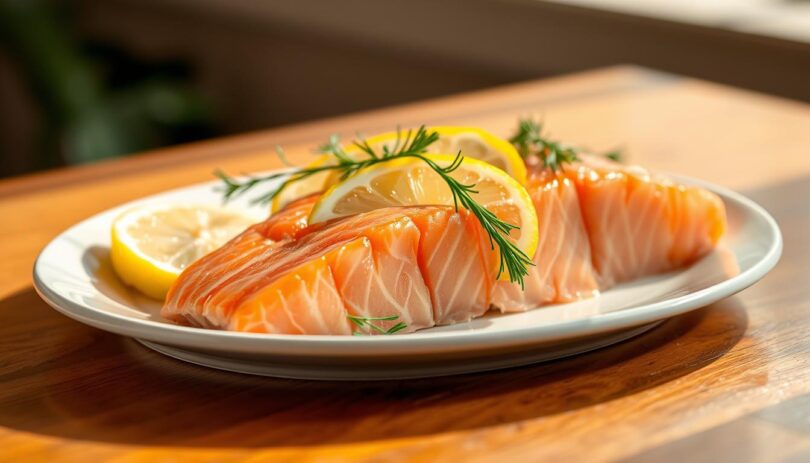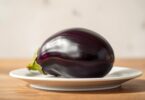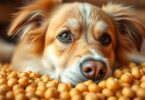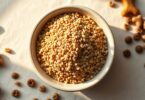Have you ever wondered if your furry friend can enjoy salmon? Many pet owners are curious about adding this nutritious fish to their dog's diet. Salmon is a great source of omega-3 fatty acids and high-quality protein, making it a beneficial addition when prepared correctly.
Expert advice recommends serving well-cooked, boneless salmon to ensure it's safe for your dog. This preparation method helps avoid harmful parasites found in raw or undercooked salmon. Salmon supports immune function and coat health, while the protein aids in energy and recovery.
Portion control and proper cooking are crucial to prevent health risks. This article will guide you on feeding guidelines and address myths about raw salmon. We'll explore nutritional benefits, safe cooking methods, and practical tips to keep your dog healthy and happy.
Nutritional Benefits of Salmon for Your Dog
Salmon is a nutrient-rich food that offers numerous health benefits for dogs. Packed with essential vitamins, minerals, and high-quality protein, it's a great addition to your dog's diet when prepared properly.
Rich in Omega-3 Fatty Acids
Salmon is renowned for its high content of omega-3 fatty acids, which play a crucial role in reducing inflammation and improving joint mobility. These fatty acids also promote a shiny, healthy coat and support immune function. Additionally, the omega-3 compounds found in salmon help manage skin conditions and enhance cognitive health.
High-Quality Protein Source
As a rich source of protein, salmon supports muscle development and repair. It's particularly beneficial for dogs with allergies to common proteins like chicken or beef. Salmon's balanced nutrient profile, including vitamin B12 and essential minerals, contributes to overall brain and nervous system health. Plus, its low mercury levels make it a safer fish option compared to others like tuna.
Incorporating salmon into your dog's diet can be a great way to provide them with essential nutrients. Just remember to keep portions controlled and ensure it's well-cooked to maintain its nutritional benefits.
Can Dogs Eat Salmon: Myths and Facts
Understanding whether salmon is safe for your dog involves separating myths from facts. Many pet owners are unsure about the risks and benefits of feeding salmon to their pets.
Debunking Raw Salmon Myths
Raw salmon can be dangerous for dogs due to a parasite called Neorickettsia helminthoeca. This parasite causes salmon poisoning disease, which can be fatal if left untreated. Symptoms may not appear for up to a week, making it harder to diagnose. Ensuring salmon is well-cooked eliminates this risk, making it a safe and nutritious treat for your dog.
Facts About Well-Cooked Salmon
Well-cooked salmon is not only safe but also provides essential nutrients like omega-3 fatty acids, which support skin health and reduce inflammation. It’s important to avoid adding seasonings like garlic or onions, as these can be harmful to dogs. Always check for small bones and use boneless fillets to prevent choking hazards. Properly cooked salmon is a healthy addition to your dog’s diet when served in moderation.
By understanding the risks of raw salmon and the benefits of cooked salmon, you can make informed decisions about your dog’s diet. Always prioritize your dog’s health by preparing salmon safely and avoiding harmful additives.
Safe Preparation Methods for Salmon
Preparing salmon for your dog requires careful attention to detail to ensure it's both safe and nutritious. Fresh, boneless salmon fillets are the best choice, as they minimize the risk of bones and parasites.
Cooking Techniques That Preserve Nutrients
Cooking salmon through methods like poaching, grilling, baking, or steaming helps retain its omega-3 fatty acids and protein. Light cooking is ideal to preserve these nutrients while ensuring the fish is safe for your dog to eat.
Avoid adding any seasonings, including salt, garlic, or onions, as these can be harmful. Keep the recipe plain to maintain your dog's health and safety.
Tips to Avoid Bones and Harmful Seasonings
Even after deboning, check for small, brittle bones to prevent choking hazards. Cut the salmon into small pieces or use it as a topping for your dog's meal. Salmon skin can be included in small amounts for an omega boost, but ensure it's properly cooked.
Veterinarians and trusted brands recommend simple preparation methods to keep the dish both nutritious and flavorful. Always balance health with safety by avoiding risky additives.
By following these preparation tips, you can provide your dog with a healthy, nutritious treat that supports their overall well-being. For more detailed feeding guidelines, visit this resource to learn how to incorporate salmon safely into your dog's diet.
Portion Control and Feeding Guidelines
When it comes to feeding your dog salmon, portion control is crucial to ensure your pet's health and safety. Salmon should be treated as an occasional addition to your dog's diet, not a staple. This approach helps prevent digestive issues and maintains a balanced diet.
Determining Dog-Specific Portions
The right portion size depends on your dog's weight. For example, medium-sized dogs can have 3-4 ounces of cooked salmon, while smaller dogs might only need 2-3 ounces. Always check for bones and ensure the salmon is boneless to avoid choking hazards. If your dog has allergies or a sensitive stomach, start with a small amount and monitor their reaction.
Frequency of Feeding Salmon Treats
Experts recommend feeding salmon no more than once a week. This frequency helps balance calories and nutrients without overloading your dog's system. Salmon is a nutritious treat, but it shouldn't replace your dog's regular, balanced meals. Introduce it gradually to avoid upsetting their stomach and to ensure they can tolerate it well.
Before making any changes to your dog's diet, it's always a good idea to consult with your veterinarian. They can provide personalized advice based on your dog's specific needs and health conditions. For more information on safely introducing new foods, visit this resource to explore expert guidelines.
Recognizing and Preventing Salmon Poisoning
Salmon can be a healthy treat for your dog, but it comes with risks if not prepared properly. Raw or undercooked salmon may lead to salmon poisoning disease, a serious condition caused by a parasite. This parasite can cause vomiting, diarrhea, lethargy, and loss of appetite in dogs.
Identifying Symptoms in Dogs
If your dog shows signs like vomiting or diarrhea after eating salmon, seek veterinary care immediately. These symptoms can appear within a week and require prompt treatment to prevent serious health issues.
Cooking salmon thoroughly eliminates the risk of salmon poisoning. Proper cooking methods like baking or steaming ensure the fish is safe for your dog. Even small amounts of undercooked salmon can be dangerous, so always check for bones and parasites before serving.
Safe feeding practices are crucial. Only serve boneless, well-cooked salmon and avoid seasonings. Monitoring your dog after introducing salmon helps catch any adverse reactions early. For more on digestive issues, visit this resource.
Prevention is key. Ensure salmon is cooked properly and served in moderation. Understanding symptoms and prevention keeps your dog healthy and safe.
Final Reflections on Incorporating Salmon into Your Dog’s Diet
Incorporating salmon into your dog’s diet can be a wise decision when done thoughtfully. As discussed, well-cooked, boneless salmon offers essential nutrients like protein and omega-3 fatty acids, which support overall health and coat shine. Remember, portion control and proper preparation are key to ensuring safety and nutrition.
While raw salmon poses risks due to parasites, cooked salmon is a nutritious treat. Always check for bones and avoid harmful seasonings. Salmon can be a tasty, healthy addition to your dog’s meals when served in moderation.
Before making any changes, consult your veterinarian, especially if your dog has health issues. Thoughtful integration of salmon can boost energy and support joint health. Yes, dogs can safely eat salmon under the right conditions.
Monitor your dog’s response to salmon-based treats and adjust portions as needed. Explore more balanced dietary options to keep your furry friend thriving. With careful preparation and moderation, salmon can be a beneficial part of your dog’s diet.
FAQ
What are the benefits of omega-3 fatty acids for my dog?
Omega-3 fatty acids, found in salmon, support your dog's coat health and can aid in reducing skin issues. They also help in maintaining joint health and brain function.
Is salmon a good source of protein for my dog?
Yes, salmon is an excellent protein source, essential for muscle maintenance and overall health in dogs.
How should I safely prepare salmon for my dog?
Cook salmon thoroughly to kill parasites. Remove all bones and avoid seasoning to ensure it's safe for your dog.
What portion size of salmon is appropriate for my dog?
The portion depends on your dog's size and activity level. Generally, a small portion (about 1/4 cup) per 10 pounds of body weight is a good guideline.










Leave a Comment